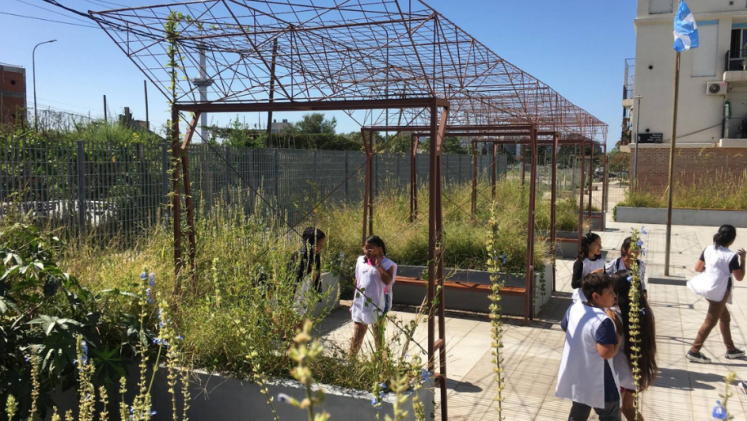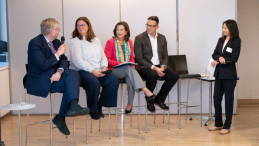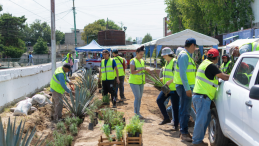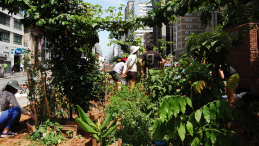Argentine villas and Brazilian favelas, home to over 1.1 billion people in informal settlements, have been slow to join the global discourse on sustainability and climate change. For these communities, climate action is defined by survival, not luxury: a tree provides shade against extreme heat. A sewage system equals resilience, not just an amenity.
The opinion piece “Mentalities that transform vulnerable urban territories” (Mentalidades que transforman territorios urbanos vulnerables), published in September 2025, highlights a profound shift: environmentalism is moving from a technical suggestion to a right demanded by residents. This mindset shift, driven by community ownership and spaces like the Urban Labs of Transformative Urban Coalitions (TUC), is the invisible lever sustaining real urban transformations.
According to UNU-EHS researcher Flávia Guerra, true urban transformation is only possible when it is understood that climate action is inseparable from social justice and the right to the city.
Read the full Spanish op-ed here. Please find the English translation below.
________________________________________
Mindsets that transform vulnerable urban areas
For the more than 1.1 billion people living in informal settlements, from Argentine slums to Brazilian favelas, the discourse on climate change and sustainability was slow to arrive, and even today it faces a central question: is it environmentalism or survival?
September 2025 | Flávia Guerra
‘I understand climate change in terms of sewers and drinking water, not in terms of trees.’ This statement by a resident of Villa 20, an informal settlement undergoing redevelopment in Buenos Aires, sums up a central dilemma of climate action in informal, low-income urban settlements such as the villas in Argentina and the favelas in Brazil: how can we talk about sustainability in contexts where the basics are still lacking?
For a long time, talking about urban sustainability was a distant conversation for those living on the margins of the city. Discussions about climate change, green infrastructure and recycling seemed reserved for experts, academics or residents of the air-conditioned, affluent northern suburbs with time on their hands. In the streets of working-class neighbourhoods, however, the agenda revolved around immediate emergencies: lack of housing, lack of sewers, lack of water, lack of everything.
However, more and more communities in informal settlements and urban peripheries are beginning to connect the environment with their daily struggles. What is emerging there is a profound transformation: a change in mentality.
From luxury to survival
What was once seen as a luxury is now beginning to be perceived as part of survival in contexts of extreme heat and urban precariousness. Trees are no longer just ornamental, but provide shade, coolness and a meeting place. And rubbish on the street corner is no longer just a hygiene problem, but part of a chain of impacts that exacerbates flooding and disease.
This process does not happen by decree or through technical plans written in municipal offices. It is born in spaces of exchange and collective learning, such as the urban laboratories organized as part of the Transformative Urban Coalitions project, where communities and scientists dialogue and implement solutions. Appropriation is the key: when the environment ceases to be ‘a suggestion from experts’ and becomes ‘a denied right’, the role of the state also changes. It is no longer the authority imposing green, it is the residents demanding it.
Mindset shifts: the invisible lever
Research from the United Nations University talks about mindset shifts: changes in perception that support profound urban transformations. In neighbourhoods in Buenos Aires, León (Mexico) and Teresina (Brazil), we have seen how residents have gone from resisting climate action initiatives, such as green spaces, to promoting them themselves as a strategy for resilience, social cohesion and health. ‘We realized too late that we had rejected green terraces. Today we say: how stupid of us!’ admits a Buenos Aires resident.
Residents recount how their relationship with the environment changed when they understood that ‘creating a green passage’ was not just aesthetic or an expensive eccentricity, but a way to resist the advance of concrete, lower the temperature of the neighbourhood and improve their daily lives. When this is understood, not only is it heard, but it is lived, and true ownership emerges.
Changing perceptions about the environment, from luxury to necessity, from something foreign to something familiar, goes hand in hand with the collaborative design and implementation of nature-based solutions, such as trees, gardens and permeable passages. Climate action makes sense when it connects with everyday concerns and is incorporated into the voice and work of local leaders and public-community partnerships. Experience shows that building trust between neighbours and other actors and linking ecological changes to the day-to-day realities of the neighbourhood does more than change habits: it weaves new forms of leadership and agency, and with them, a city that is transformed from within.
People, profiles and changes
According to these studies, there are common ‘urban characters’ that shape the different ways people perceive and act in response to the climate crisis. These include the sceptical activist, who acts from the community base with deep social commitment; the optimistic technocrat, who trusts in innovation, technology and state action; and the ambivalent spectator, who recognizes the climate crisis but perceives it as a distant problem or one that is alien to their context.
These profiles are not rigid categories, but are transformed through collective experiences and learning processes, such as transformative urban coalitions. And how does recognizing and identifying these profiles help us? For example, involving sceptical activists in real spaces for participation with authorities allows them to broaden their vision; supporting technocrats with tangible projects on the ground makes it easier for them to recognize the social dimensions; and awakening spectators with practical training and spaces for empowerment can turn indifference into action.
What is common in all cases is that these changes in mindset do not happen automatically or remain without minimum conditions. It takes time for reflective learning, active and respectful listening between experts and communities and genuine political commitment to sustain the continuity of these processes.
Climate justice from below
Testimonies from the neighbourhood and academic evidence agree: thinking about sustainability without addressing the urgent needs of these territories or including their voices is a mistake. True urban transformation is only possible when we understand that climate action is inseparable from social justice and the right to the city for all. There will be no resilient city if trees and sewers continue to be seen as opposites.
But these mental transformations are already happening. From below, from the intervened passageway, the garden that grows by hand, the neighbour who begins to understand that the tree is not a decoration, but part of a necessity. The city of the future is beginning to be built in everyday life. There, where the urgent and the possible meet. What begins as a community garden or a green passageway can become input for redesigning housing and urban planning policies on a city-wide scale. What is needed now is to listen to them, learn from these experiences and weave urban coalitions that multiply these mindset shifts.
Flávia Guerra is a senior researcher at the United Nations University Institute for Environment and Human Security (UNU-EHS).





